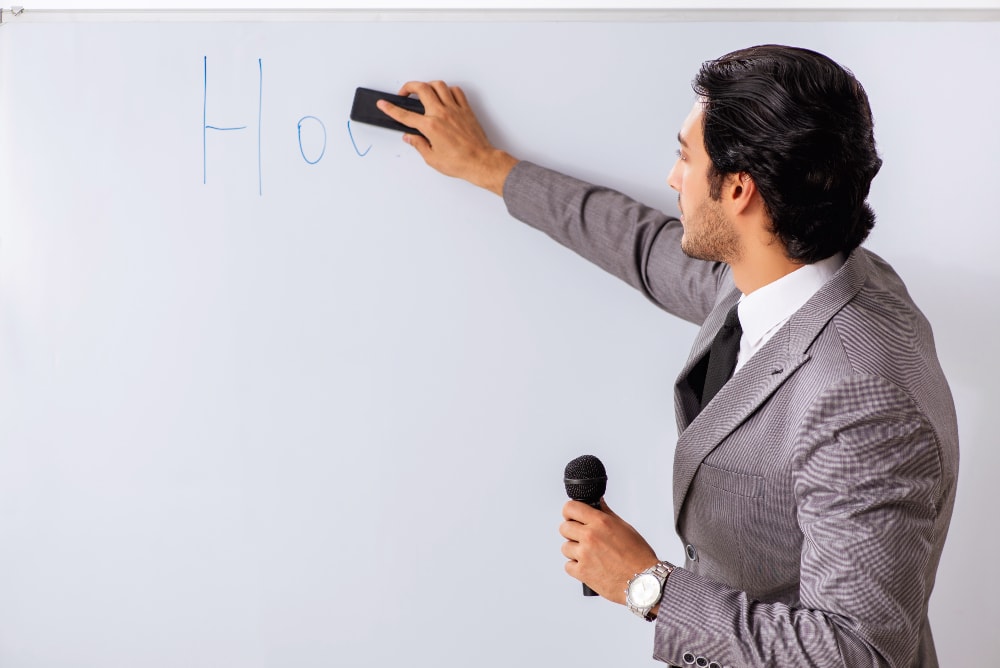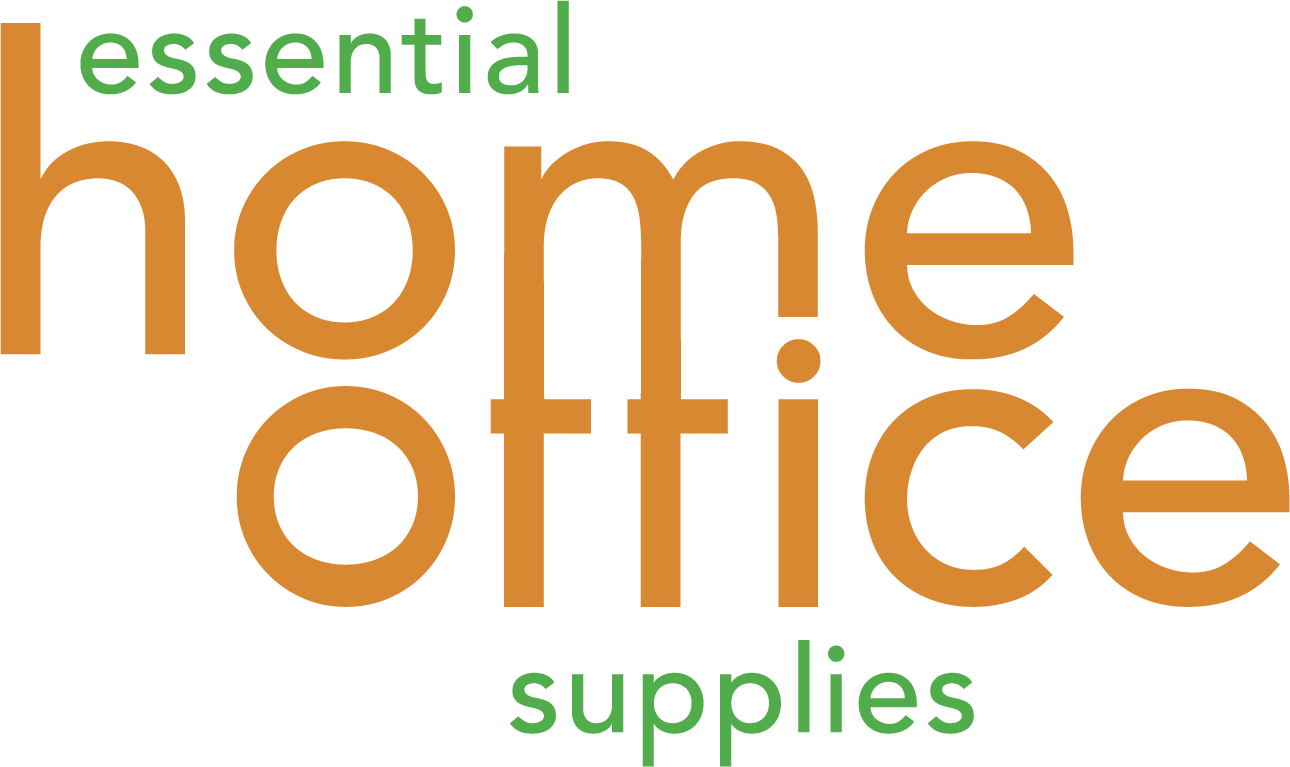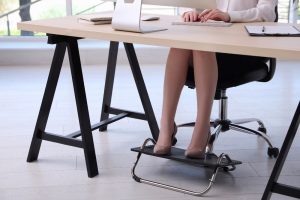In the realm of efficient home offices and organized workspaces, few tools are as invaluable as the trusty whiteboard. These versatile surfaces allow us to brainstorm, plan, and visualize ideas with ease.
However, even the most well-maintained home office can fall victim to an all-too-common dilemma: the stubborn presence of permanent marker stains on a once-pristine whiteboard. The unsightly marks not only mar the appearance of your workspace but also hinder its functionality.
But fear not, for we have the solution you need to reclaim the clarity and cleanliness of your whiteboard. In this article, we’ll delve into the art of effectively removing permanent marker stains from whiteboards.
From understanding the chemistry behind these stubborn stains to exploring various tried-and-true methods, you’ll soon have the tools and know-how to restore your whiteboard to its former glory. Join us as we unravel the mystery of marker removal and empower you to maintain a workspace that fosters creativity and productivity.
Understanding Whiteboard Permanent Marker Stains
The battle against permanent marker stains on whiteboards begins with a solid understanding of the enemy. Permanent markers, also known as “Sharpies” or “permanent pens,” are designed to leave long-lasting marks on surfaces. Their ink is composed of a mixture of pigments, solvents, and resins that adhere firmly to a variety of materials.
Unfortunately, this durability that makes them excellent for long-lasting projects also makes them a headache when they end up where they shouldn’t, such as on your pristine whiteboard. It’s an easy mistake to make – picking up a sharpie (or permanent marker) when you think you’re using a whiteboard marker, but what takes mere seconds to leave its mark can take some time and effort to remove!
The composition of permanent marker ink is engineered to withstand fading, smudging, and washing, which means that once it’s applied to a surface, it tends to stay put – they’re not called ‘permanent’ markers for nothing!
On porous surfaces like paper, fabric, or untreated wood, the ink seeps into the material’s fibers, making it virtually impossible to remove completely. However, on non-porous surfaces like whiteboards, the ink remains on the surface, making it slightly more feasible to remove, though still challenging.

What makes permanent marker stains particularly stubborn is that they often penetrate the microscopic pores of the whiteboard’s surface, bonding to it in a way that most conventional cleaners struggle to counteract. Over time, these stains can become more embedded and resistant to removal, emphasizing the importance of tackling them as soon as they are discovered.
It’s also worth noting that the type of whiteboard you have can influence the ease or difficulty of removing permanent marker stains. Porcelain whiteboards tend to be more resistant to staining due to their smoother, non-porous surface, while melamine or laminate whiteboards may be more susceptible to permanent marker absorption.
As we dive into various methods for removing permanent marker stains from whiteboards, remember that time is of the essence. The longer the stain remains, the more it sets in, and the harder it becomes to remove. With the right techniques and a bit of patience, you can successfully combat these resilient marks and restore your whiteboard’s clean, functional surface.
Preparing for Marker Removal
Before you embark on your mission to banish those pesky permanent marker stains from your whiteboard, it’s essential to gather the necessary supplies and set the stage for a successful cleanup. Here’s what you’ll need:
1. Rubbing Alcohol or Isopropyl Alcohol (70% or higher): This powerful solvent is a staple for marker removal. It breaks down the ink’s chemical bonds, making it easier to lift off the surface. Ensure proper ventilation when using rubbing alcohol and avoid contact with your skin and eyes.
2. Acetone or Nail Polish Remover: Acetone is another potent option for dissolving permanent marker stains. Nail polish remover containing acetone can also be used. Keep in mind that acetone has a strong odor and should be used in a well-ventilated area.
3.Dry Erase Marker: Yes, you read that right. A dry erase marker can be surprisingly effective in removing permanent marker stains. It works by reactivating the permanent marker ink, allowing it to be wiped away more easily.
4.Toothpaste: A mild abrasive like toothpaste can be used to gently scrub away marker stains. Choose a white toothpaste without any added colors or gels.
5.Microfiber Cloth or Soft Cloth: Use a lint-free, non-abrasive cloth to avoid scratching the whiteboard surface.
6.Cotton Balls or Q-tips: These are useful for applying rubbing alcohol or acetone precisely to the stained areas.
Now that you have your arsenal of marker-removing tools, consider these additional tips:
- Test a Small Area: Before applying any method to the entire stain, test it on a small, inconspicuous area of the whiteboard to ensure it doesn’t damage the surface or cause discoloration.
- Protect Your Hands: When working with rubbing alcohol, acetone, or other chemicals, consider wearing disposable gloves to protect your hands.
- Ventilation: If you’re using rubbing alcohol or acetone, ensure the area is well-ventilated to avoid inhaling fumes.
- Patience: Removing permanent marker stains might require some time and persistence. Be patient and repeat the chosen method if necessary.
By taking these preliminary steps and having your supplies at the ready, you’ll be well-prepared to tackle those stubborn permanent marker stains and restore the brilliance of your whiteboard. Remember, prompt action can make all the difference in achieving successful marker removal.

Different Methods for Removing Permanent Marker
When it comes to bidding farewell to those unsightly permanent marker stains on your whiteboard, you have a few tricks up your sleeve. Let’s explore various tried-and-true methods that have proven effective for marker removal:
Rubbing Alcohol Method
- Moisten a cotton ball or soft cloth with rubbing alcohol.
- Gently dab the stained area with the alcohol-soaked cloth, allowing the alcohol to break down the marker ink.
- Use a clean portion of the cloth to wipe away the dissolved ink.
- If necessary, repeat the process until the stain is gone.
Acetone/Nail Polish Remover Method
- Apply a small amount of acetone or nail polish remover to a cotton ball or soft cloth.
- Gently blot the stained area, taking care not to rub too hard to avoid damaging the whiteboard’s surface.
- Wipe away the dissolved marker ink with a clean cloth.
- Ensure proper ventilation due to the strong odor of acetone.
Dry Erase Marker Method
- Grab a dry erase marker in a color that contrasts with the permanent marker stain.
- Completely cover the permanent marker stain with the dry erase ink.
- Allow the dry erase ink to sit for a minute or so.
- Wipe both the dry erase ink and permanent marker ink away using a clean cloth or eraser. The combination of the two inks should lift the permanent marker off the whiteboard’s surface.
Toothpaste Method
- Apply a small amount of white toothpaste to a soft cloth.
- Gently rub the toothpaste onto the permanent marker stain using circular motions.
- Wipe away the toothpaste and dissolved marker ink with a clean cloth.
- Rinse the whiteboard with water and dry it thoroughly.
Remember, while these methods are generally safe for most whiteboards, it’s always a good idea to test any method on a small, inconspicuous area of the whiteboard first to ensure it doesn’t cause any damage or discoloration. Additionally, take care not to apply excessive pressure that could scratch the whiteboard’s surface.
Each of these methods has its unique advantages, so you can choose the one that suits your preferences and available supplies. If one method doesn’t completely remove the stain, don’t be discouraged—repeat the process or try a different method until your whiteboard is spotless once more.

Additional Tips and Precautions
Successfully removing permanent marker stains from a whiteboard requires a mix of technique, patience, and careful consideration. Here are some additional tips and precautions to keep in mind:
Test in an Inconspicuous Area: Before attempting any marker removal method, test it on a small, hidden corner of the whiteboard to ensure it doesn’t cause damage or discoloration.
Gentle Scrubbing: When applying any method, be cautious not to scrub too aggressively, as this could scratch the whiteboard’s surface. Use gentle pressure and soft cloths.
Ventilation: If you’re using rubbing alcohol, acetone, or other chemicals, make sure to work in a well-ventilated area to avoid inhaling fumes.
Patience is Key: Some stains may require multiple attempts for complete removal, especially if they’ve been present for a while. Be patient and persistent.
Keep the Whiteboard Dry: After cleaning, ensure the whiteboard is thoroughly dried to prevent future staining. Moisture can cause marker ink to spread and settle into the surface.
Avoid Abrasive Tools: While a gentle abrasive like toothpaste can be effective, avoid using abrasive pads or rough materials that could damage the whiteboard.
Regular Maintenance: To prevent permanent marker stains from becoming a recurring issue, use only designated whiteboard markers on the surface. Keep permanent markers well away from your workspace to avoid accidental mishaps.
Eraser Use: A clean, dry whiteboard eraser can help remove light marker residue. However, avoid using the eraser as the primary method for removing permanent marker stains, as it might not be effective on its own.
Seek Professional Help: If all else fails or if you’re concerned about damaging your whiteboard, consider seeking advice from the manufacturer or a professional cleaning service that specializes in office equipment.
Remember, the goal is not only to remove the stain but also to preserve the integrity of your whiteboard. By following these tips and being cautious in your approach, you’ll increase your chances of successfully erasing those stubborn marker marks without causing harm.

Maintenance and Preventing Future Stains
While learning effective methods to remove permanent marker stains is essential, preventing those stains in the first place can save you time and frustration. Here’s how to maintain a clean whiteboard and reduce the likelihood of future marker mishaps:
- Use Designated Whiteboard Markers: Always use markers specifically designed for whiteboards. These markers are formulated to be easily erasable, minimizing the risk of staining. Keep permanent markers far away from your workspace to avoid mix-ups.
- Erase Regularly: Make erasing a regular part of your whiteboard routine. This not only keeps your board looking clean but also prevents marker residue from building up over time.
- Use Dry Erase Cleaner: Invest in a dry erase cleaner or whiteboard cleaning solution. Regularly using these products can help maintain your whiteboard’s surface and make it easier to erase marker marks.
- Quick Erasing: Address any marker marks as soon as they appear. The longer a stain sits, the harder it can be to remove. Quick action can save you the hassle of dealing with stubborn stains later on.
- Avoid Excessive Pressure: When writing on the whiteboard, use a light touch. Excessive pressure can cause the marker to press into the surface, making it more challenging to erase.
- Educate Others: If you share your workspace with others, ensure they understand the importance of using the correct markers and being cautious around the whiteboard.
- Regular Cleaning: Incorporate whiteboard cleaning into your overall home office workspace cleaning routine. This will help you catch and address potential staining issues early.
- Test New Markers: If you’re introducing new markers to your workspace, test them on a small area of the whiteboard to ensure they can be easily erased without leaving residue or stains.
By adopting these preventive measures and practicing proper whiteboard maintenance, you’ll not only keep your home office looking professional but also extend the life of your whiteboard. A little effort goes a long way in creating an organized, productive environment that fosters creativity and collaboration.

In the dynamic realm of home offices and workspaces, a clean, functional whiteboard can be a powerful tool for ideation, planning, and organization. While the challenge of removing permanent marker stains might seem daunting, armed with the knowledge and techniques provided in this article, you’re well-equipped to conquer even the most stubborn marks.
From understanding the chemistry behind permanent marker stains to mastering the art of effective removal methods, you now possess the insights needed to restore your whiteboard to its former brilliance.
Whether you opt for the rubbing alcohol approach, the dry erase marker trick, or any other method mentioned, your commitment to cleanliness and organization will shine through.
Remember, maintenance and preventive measures are key to preserving the integrity of your whiteboard over time. By following best practices, such as using designated whiteboard markers, erasing regularly, and keeping your workspace clean, you can reduce the likelihood of future marker mishaps and ensure your whiteboard remains a reliable tool in your productivity arsenal.
In the ever-evolving landscape of home office productivity, the power of a well-maintained whiteboard cannot be underestimated. With your newfound knowledge and the willingness to take action, you can create an inspiring workspace that fuels your creativity, fosters collaboration, and keeps the focus on your goals.
So go forth, armed with your marker-removing wisdom, and let your whiteboard become a canvas of endless possibilities once again.
Oh, and if you find that you’ve accidentally used permanent markers on some other surfaces in your home office, or home, you can find out all the best ways to clean permanent markers from any surface, here.











